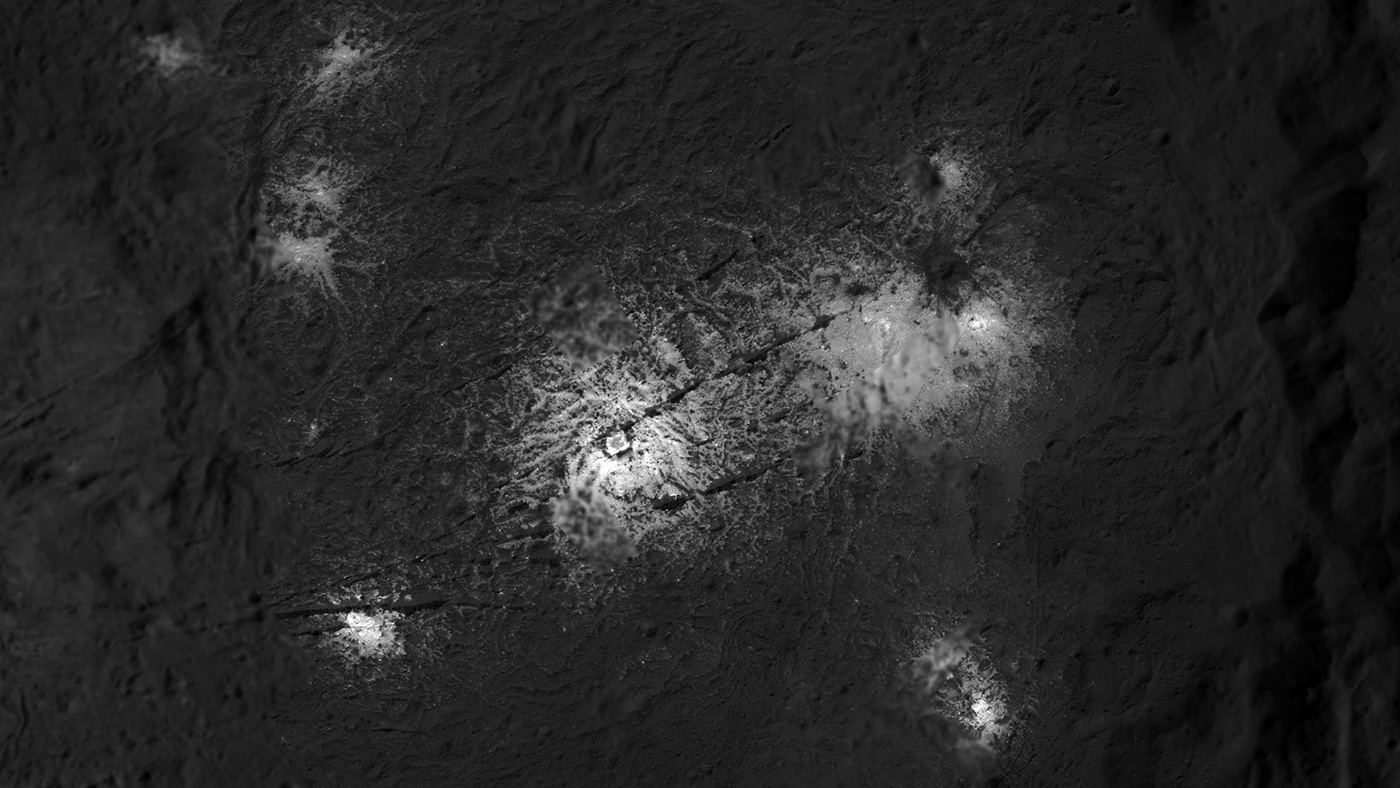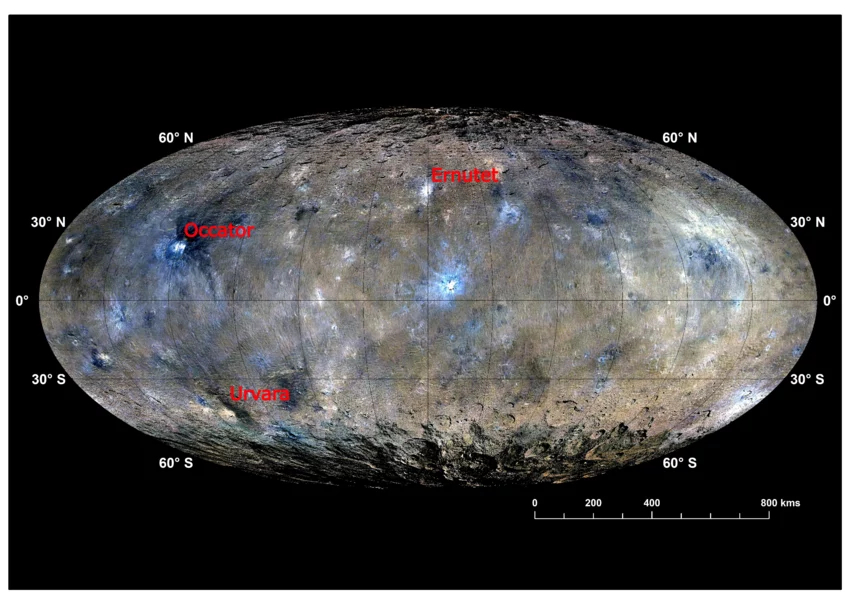This crater on dwarf planet Ceres that may hold another icy volcano, scientists say
The finding comes from a fresh analysis of old data from NASA's Dawn spacecraft, which finished its mission in 2018.

Ceres might be spewing cryovolcanoes in yet another spot on the dwarf planet's surface.
Close-up pictures from NASA's Dawn mission that orbited Ceres between 2015 and 2018 revealed salt deposits in a crater known as Urvara, spotted for the first time in a new study. The salt deposits may be associated with icy volcanoes, the research team says, whose brine rose to the surface over time.
Given there are multiple zones on Ceres with salt deposits, the implication is there might be a source of salt underneath the asteroid's surface, such as a possible saline ocean. (The salts, however, might have come from the impact that formed Urvara 250 million years ago instead.)
Photos: The changing bright spots of dwarf planet Ceres
The larger implication is what water could mean on a relatively small world that is less than 300 miles (482 kilometers) in diameter, especially in terms of understanding the formation of Ceres and larger dwarf planets like it. This is far from the first study to suggest a possible global ocean hidden inside Ceres and adds to years of speculation about how so much liquid water could be possible in a tiny world far out in the solar system.
"The large impact structures on Ceres give us access to the deeper layers of the dwarf planet," lead author Andreas Nathues, a scientist at the Max Planck Institute for Solar System Research (MPS) in Göttingen, Germany, said in a statement.
Natheus pointed out that the topography and composition of the craters seems to indicate "complex and long-lasting geological processes that have altered the dwarf planet's surface." The 105-mile-wide (170 km) Urvara is an example of this; the asteroid that formed the crater 250 million years ago excavated material from as deep as 31 miles (50 km) below the surface.
Breaking space news, the latest updates on rocket launches, skywatching events and more!
The team mostly relied upon images taken by Dawn during its extended mission, which brought the spacecraft to within just 22 miles (35 km) of the surface to take high-resolution photography. MPS' two Dawn Framing Cameras obtained the data that was used in the study.
The images showed a "geologically distinctly diverse landscape" within Urvara, the researchers said in the release, including terraced crater walls, a large mountain range, sharp cliffs and most importantly for the cryovolcano argument, bright material that looks a lot like the salts found in the more famous Occator crater.
The salts are notable not only for their potential for cryovolcanoes, but also because they are close to organic compounds, meaning the carbon-containing building blocks of life as we know it. It's the first time salt deposits and organic compounds were found combined on the surface. They were particularly concentrated on a slope west of the central mountains, researchers said.
The organics find has "important implications for the overall geologic history of Ceres as well as potential links to astrobiology and habitability," noted scientist Guneshwar Thangjam, who is at the National Institute of Science Education and Research in Bhubaneswar, India.
The team will compare the Urvara organics to those found in another crater, Ernutet, to better answer those astrobiology and habitability links, Thangjam added.
A study based on the research was published Tuesday (Feb. 22) in Nature.
Follow Elizabeth Howell on Twitter @howellspace. Follow us on Twitter @Spacedotcom and on Facebook.

Elizabeth Howell (she/her), Ph.D., was a staff writer in the spaceflight channel between 2022 and 2024 specializing in Canadian space news. She was contributing writer for Space.com for 10 years from 2012 to 2024. Elizabeth's reporting includes multiple exclusives with the White House, leading world coverage about a lost-and-found space tomato on the International Space Station, witnessing five human spaceflight launches on two continents, flying parabolic, working inside a spacesuit, and participating in a simulated Mars mission. Her latest book, "Why Am I Taller?" (ECW Press, 2022) is co-written with astronaut Dave Williams.



